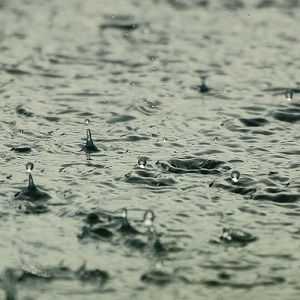Thanks to our glorious weather conditions, tennis in Northern Ireland is a sport often played in the rain. Depending on your style of play you will either enjoy playing in the rain or detest it.
If you have a big serve then the wet court will produce fast skidding bounces which will make your serve much harder to return. However if you are a retriever/counter puncher then the rain will hinder your performance due to heavier balls and less time to reach your opponents shots after they bounce.
No matter what your playing style is it is possible to make alterations to your shots and tactics that will result in more success in wet conditions.
TIP 1 – Alter Your Backswing
Your shot timing changes in wet conditions due to the fast bounce so it is therefore necessary to alter your backswing in order to ensure you still time your shot sweetly.
The first way you can alter your backswing is to shorten it. A shorter backswing will make it easier to time a fast ball but it will reduce the amount of power generated. If you have a powerful style then a slight reduction in shot power shouldn’t impact on your game too much. However if your style is more focussed on placement and control then a reduction in power could make you vulnerable to being attacked.
If you feel you cannot afford to lose shot power then another way to alter your backswing is to prepare earlier. This is a more difficult option but the benefits of early preparation in wet conditions are no loss of power and it is also a useful skill in dry conditions.
How early you should prepare is dependant on your normal preparation time but at the very least you should have your backswing underway as your opponents shot crosses the net.
TIP 2 – Slice Your Groundstrokes
Wet court = low bounce
Slice groundstroke = low bounce
Wet court & slice = very low bounce!
A very low bounce means that your opponent has less time to reach your shots. It also means that your opponent has to hit up on the ball in order to get it over the net which means it is harder for them to attack you.

TIP 3 – Bend Your Knees
Bending your knees is always important for groundstrokes in all weather conditions but it takes on extra importance in wet conditions. Not bending your knees and the low bounce coming off the wet surface will result in more miss-hits and miss-timed shots due to an incorrect point of contact.
Johanna Konta, the No. 1 British female, is an example of a player with excellent knee bend.
TIP 4 – Get Rid Of The Kick Serve
If you normally hit a kick serve for either your 1st or 2nd serve then ditch it in wet conditions. Under normal conditions a kick serve is effective because the ball bounces up high and it is awkward for the returner to play it. However in wet conditions a kick serve won’t bounce up as high as it usually does and it might even bounce up to a comfortable height for your opponent to attack.
Take advantage of the low, quick bounces by hitting a flat 1st serve and a heavy slice 2nd serve.
A second serve that uses slice instead of kick has a lower margin of error so you might experience more double faults. However it should be more difficult for your opponent to return a sliced serve so you should get more free points.
TIP 5 – Volley
The hardest part of playing in wet conditions is dealing with the bounce. It is in your best interests to get into the net and hit a volley therefore taking the difficult bounce out of the equation.
If you want to get into the net then ‘TIP 2 – Slice Your Groundstrokes’ is a very successful strategy in wet conditions.
